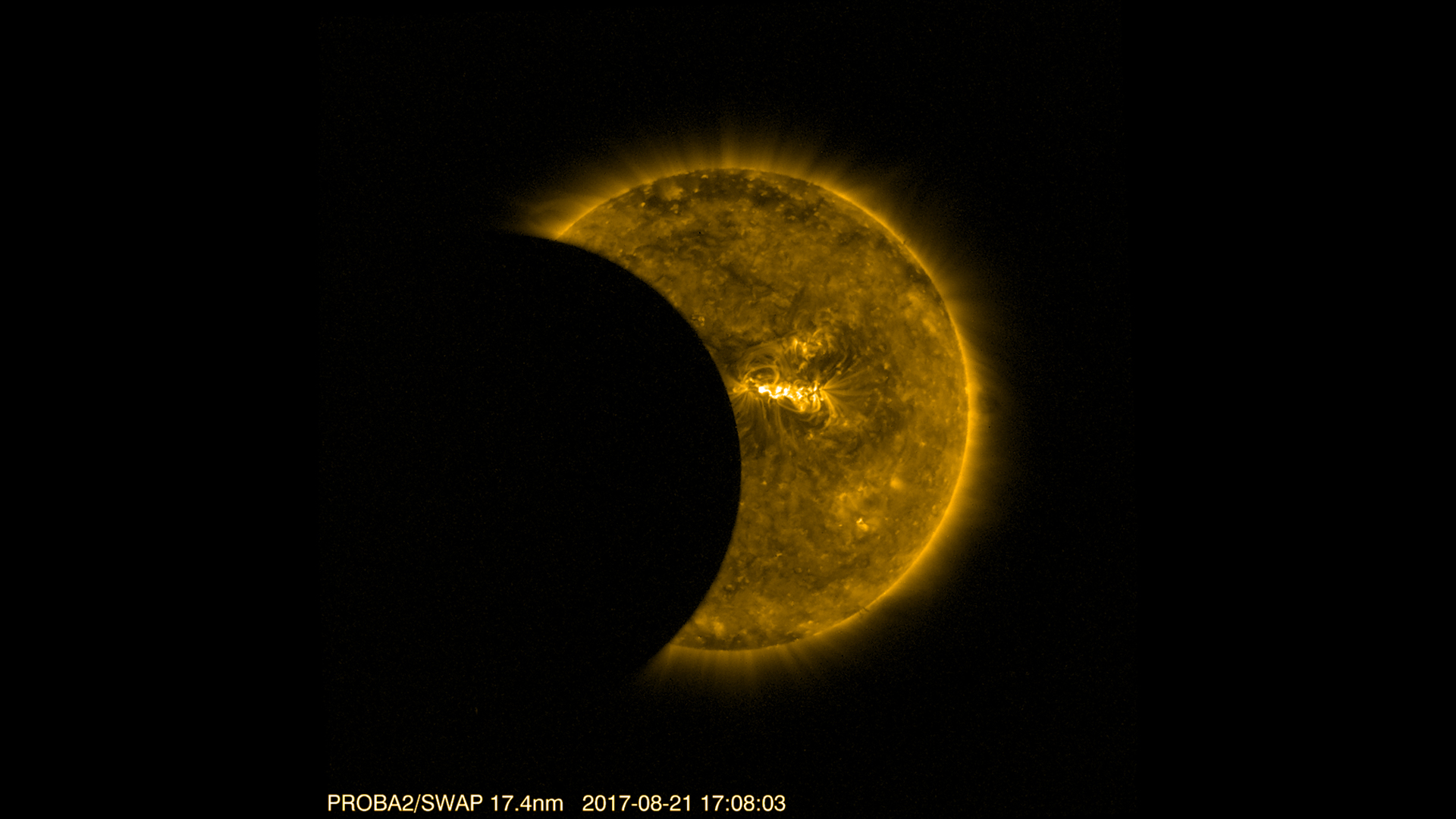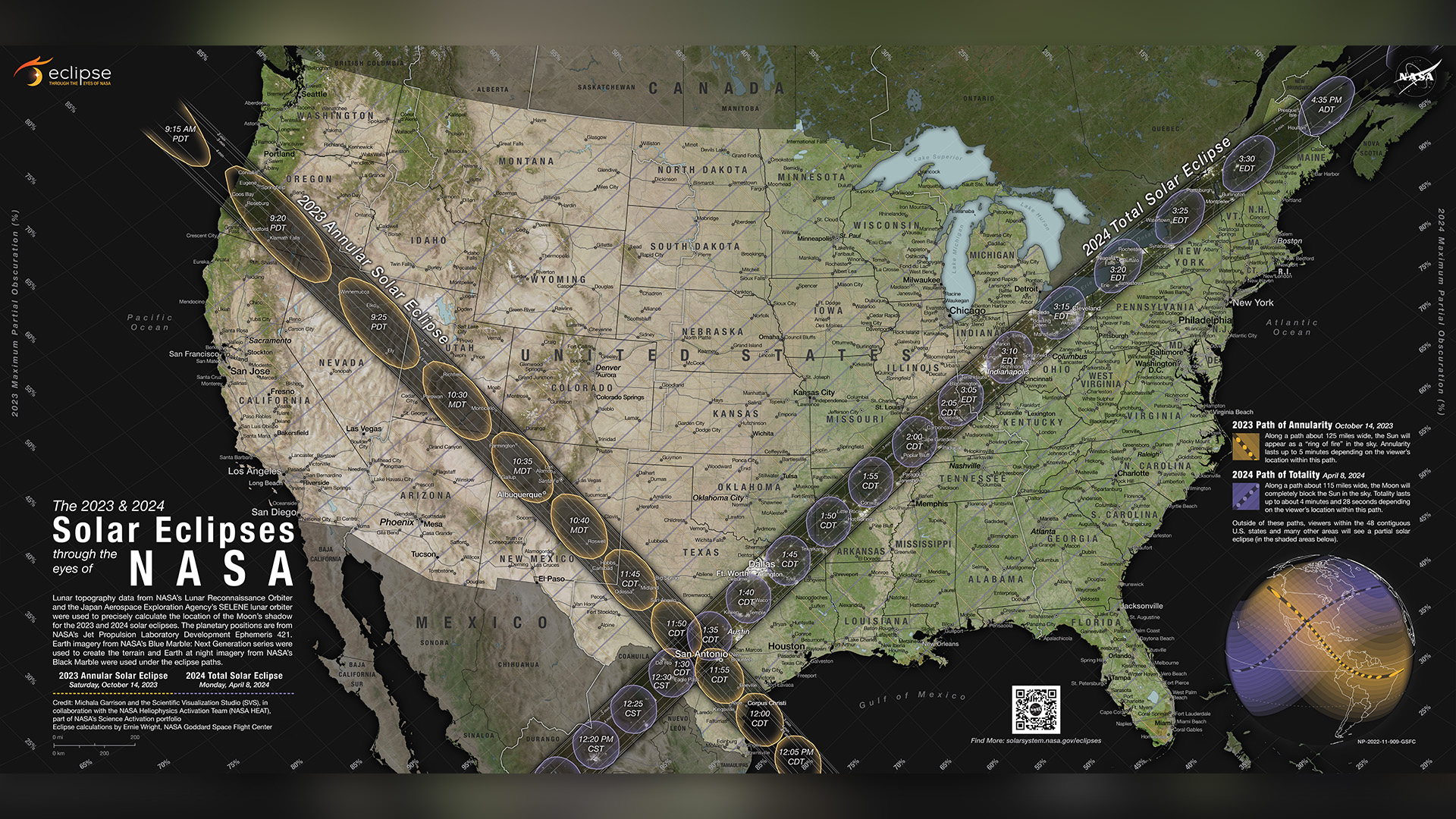
On April 8, 2024, a total solar eclipse will be visible in parts of Mexico, the U.S. and Canada, and all of North America will see at least a partial solar eclipse. The maximum length of totality — when the sun's face is completely blocked by the moon — will be 4 minutes, 28 seconds, which will occur close to the village of Nazas in northwestern Mexico. That's relatively long, but it's nowhere near the record.
So what is the longest total eclipse in history? And what's the longest possible total solar eclipse?
The longest totality on record was 7 minutes, 28 seconds on June 15, 743 B.C., which occurred in the Indian Ocean off the coast of Kenya and Somalia in Africa, according to calculations from NASA.
But in theory, totality can be a bit longer. Mathematically speaking, the longest totality possible on Earth is 7 minutes, 31 seconds, according to eclipse calculator Jean Meeus. That's possible within 5 degrees north of the equator in July, when the sun is at aphelion, its farthest point from Earth — and so slightly smaller in the sky — while the moon is at perigee, its closest point to Earth. Moreover, to experience this, the observer would have to be at the point of greatest eclipse, with the eclipse occurring directly overhead around midday.
Related: Total solar eclipse April 2024: The 10 biggest cities within the path of totality
There is no record of such a long eclipse happening, at least not over the last several thousand years. But more than 150 years from now, we may get closer to that limit. Total solar eclipses have been computed far into the future, and one that will cross the Atlantic Ocean off the coast of French Guiana on July 16, 2186, is predicted to result in a totality lasting 7 minutes, 29 seconds.
"During the 2186 eclipse, the moon's shadow will occur above the center of the Earth," Dan McGlaun, an eclipse expert at Eclipse 2024, which has an interactive map and eclipse simulator for the upcoming eclipse, told Live Science. "The moon will be really big because it will be relatively close and the sun will be really small because it will be relatively far. All of those things will come together to make totality during the 2186 eclipse extremely long."

The 2186 eclipse will occur in July, when the sun is farthest from Earth and close to the equator — two characteristics that all extremely long-duration eclipses have in common. It will be a product of Saros 139, a family of solar eclipses responsible for 71 events between 1843 and 2601. It sees a moon shadow projected onto Earth every 18 years, 11 days and eight hours, one of which will also occur on April 8, 2024.
"On April 8, we will experience one in of a series of progressing solar eclipses within the Saros 139 eclipse cycle, culminating in the remarkable total solar eclipse of July 16, 2186," Michael Zeiler, an eclipse cartographer at GreatAmericanEclipse.com, told Live Science. "Totality for the 2186 eclipse will last up to an astonishing 7 minutes and 29 seconds, very close to the theoretical limit of 7 and a half minutes."
Although the longest eclipse in history occurred thousands of years ago and an even longer one won't happen for more than a century, it is possible to cheat if you have a supersonic jet. On June 30, 1973, seven scientists in the supersonic jet Concorde 001 flew at Mach 2 to extend totality on the ground in Niger from 7 minutes, 4 seconds to a whopping 74 minutes.
That total solar eclipse was a product of Saros 136, as are the following three total solar eclipses of extreme duration. The next one will occur on Aug. 2, 2027 (maximum totality of 6 minutes, 23 seconds near Luxor, Egypt), Aug. 12, 2045 (maximum totality of 6 minutes, 6 seconds off the coast of Florida and the Bahamas) and Aug. 24, 2063 (maximum totality of 5 minutes, 49 seconds in the North Pacific Ocean). The longest totality of the 21st century — 6 minutes, 39 seconds — occurred July 22, 2009, close to Japan's Ishinomura-Kitaio Island.







